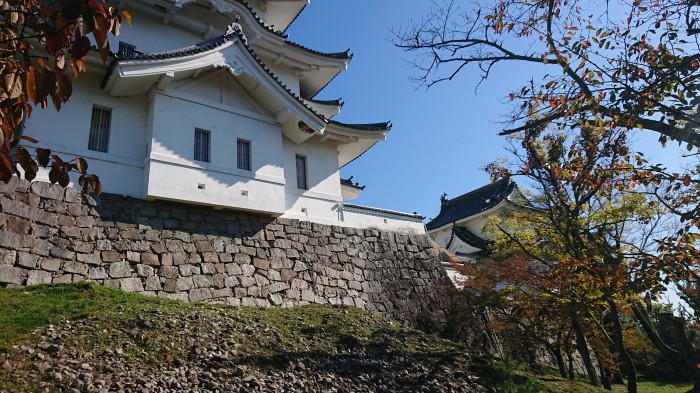A look into Japan’s death sentence
Capital punishment or the death penalty exists in Japan and it is still used. This may come as a shock to people who are excited by the ‘strangeness’ of all things Japanese but it is a reality.
Criticisms
The world seems to be moving away from capital and corporal punishment and there is heavy debate about this- no matter the culture or religious background of the country.
Japan has received criticism, sometimes rightfully so, for many things. The most controversial is political motivation. Executions in 2018 were at a 10 year high at 18 and the reasoning for this simple: it may be hard to carry out executions in 2019 due to the abdication and crowning of the emperor, and a reluctance to carry out an execution when the Olympics are taking place.
Additionally, under Japanese law, commended prisoners are not classified as prisoners so the conditions they are kept in are not reported on. Japan has come under fire from Amnesty International on several occasions because of the way it treats prisoners.
The process
In practice, the death penalty is only given to multiple murders or murders with additional unspeakable actions e.g. murder kidnapping etc. In addition to this, there are a further 9 factors which will affect the sentencing:
- Degree of viciousness- was the person ‘put out of their misery’ or was it a messy affair?
- Motive- revenge, money, love, just because?
- How the crime was committed; especially the manner in which the victim was killed. (also looks into planning and additional factors)
- Outcome of the crime; especially the number of victims.
- Sentiments of the bereaved family members. (The most important one on the list).
- Impact of the crime on Japanese society.
- Defendant’s age (in Japan, the age of majority is 20). (18+ can be given a death sentence)
- Defendant’s previous criminal record. (first time or long history)
- Degree of remorse shown by the defendant. (does depend on the person and the crime)
This was something that I studied in detail during my time a NUFS and it has always stuck with me. In theory there are safeguards and at a sentencing level it does work. Additionally, the death sentence is rarely imposed and the Japanese BAR association want to:
… the JFBA hereby strongly protests the executions conducted today [02/08/2019], and reiterates its stance that the Government should immediately suspend all executions [moratorium], looking towards the total abolition of the death penalty system in Japan by 2020.
Yutaro Kikuchi, President (August 2, 2019)
Japan Federation of Bar Associations
The JFBA posts in English, Japanese, and Chinese and it is a brilliant resource which does report on “unpopular” topics- if noting else, please do check out their ‘opinion’ posts.
Alas, the death sentence seems like a convenient option for the Japanese government to be seen to be doing something.
Public opinion
Public opinion is in favor of the death sentence and it is logical that the family of the victim seek the harshest punishment possible- whether this is always the correct choice is another conversation.
Fun fact: trial by jury was only introduced in 2009 in Japan (please re-read that statement. The line in ‘ a trial by your peers’ goes back to 1215 in UK law, to the foundation of the US (it’s the 7th amendment), was used in the ancient world (Greece and Rome) but it is only 10 old in Japan.
Most Japanese are in favor of the death sentence and even though there are campaigns against it, it does not seem likely to change any time soon.
Another fun fact: condemned prisoners sentenced before 2009 have been campaigning for a retrial and to be tried by their peers- most appeals for a retrial has been denied.
The Death chamber
The actual process of execution is carried out by hanging using the ‘long drop’ method to snap the neck.
The death warrant is signed by the minister of justice and once signed the condemned will be executed within 5 days. The problem with this system is that no-one is told. The prisoner is only told the morning of his execution that he as, at best, 15 hours left in this world.
Death chambers are located across Japan, but the 3 that are used the most are in Tokyo, Osaka, and Nagoya (which are the 1st, 3rd and 4th biggest cities ion Japan).
A clash of culture
Japan is an extremely Buddhist country and many laws reflect Buddhist teachings. The death sentence was initially introduced from China (along with a writing system, culture, law, philosophy etc) before being abolished until 1180.
Even though Buddhism teaching the scanty of life and the importance of preserving life, executions until the Meiji period (1873) were cruel and unusual and the meaning for this is said to be Confucianism- where your position in society must be protected and any perceived threat was dealt with. Think of the witch hunts- and you know how they got confessions, treated the accused and just what rights they (did not) have- this was how the condemned were treated in Japan.
In modern Japan, only murder gets a death sentence. But, is this still too much, or is it too little? What do you think?
Thank you for reading and happy exploring.








